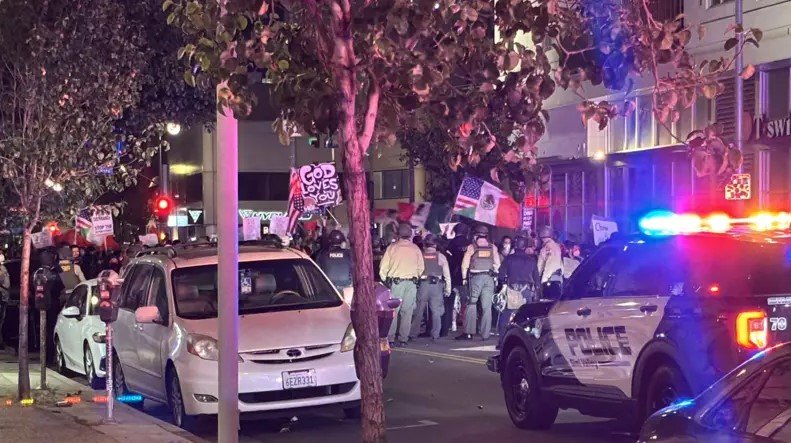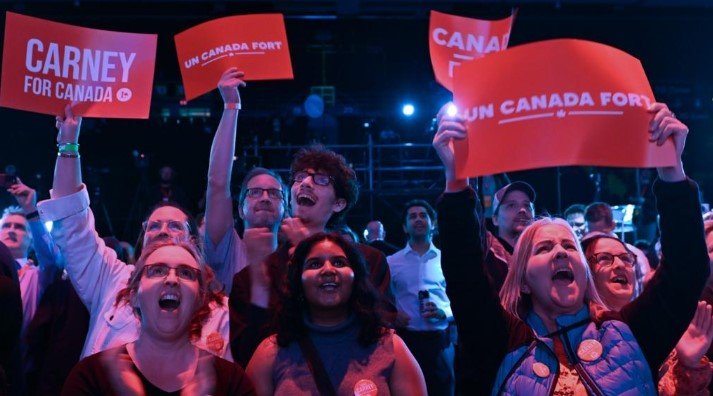On the fourth day of unrest, Donald Trump ordered an extra 2,000 National Guardsmen and 700 Marines into downtown Los Angeles. The deployment jolted federal involvement to a new level and revived a familiar debate about sending soldiers into American streets.
A Video Sparks Widespread Discontent
The unrest was initially sparked by footage that appears to show LAPD officers applying excessive force during a routine traffic stop involving a 19-year-old Black motorist. Eyewitnesses say the first wave of protesters followed the clip online, chanting, carrying candles, and engaging in call-and-response organizing that covered several city blocks.
That peaceful tone shifted three nights later, as windows shattered, businesses boarded up, and riot officers began making mass arrests.
From a private rally in Texas, Trump released a pre-recorded statement claiming California now suffers from dangerous lawlessness and insisting that order must be restored without delay.
Los Angeles is under siege, exclaimed the former President at a Thursday afternoon rally. If politicians at every level continue to look the other way, he warned, the military will step in. He pledged an immediate surge: two thousand Guard troops plus seven hundred Marines on standby, whatever that means in peacetime language.
The Los Angeles Police Department was not blindsided. Officers on the ground handled the news before the press release even hit the wires. Chief Dominic Whitman characterized the extra boots as welcome but insisted that any coordination would fall under State Command. Protests, Whitman insisted, deserve space. Rioting does not. When windows shatter and flames spread, explanation gives way to enforcement.
According to department logs for the past week, more than 370 arrests line the ledger. Charges range from unlawful assembly to outright looting, with curfew violations sewn through the middle. Medical bulletins tell a harsher story: at least twenty-nine injuries, seven of them officers, plus two reporters caught in the crowd. Eyewitnesses at local ERs confirm the sting of rubber projectiles and the burning taste of tear gas in the air.
DOWNTOWN L.A. SEES AN UNPRECEDENTED MILITARY BUILDUP
By dawn on Saturday, the heart of downtown Los Angeles felt as though a spotlight had fallen on a war film set rather than a Sunday farmer’s market. Armored personnel carriers rattled over the pavement at First and Spring while a pair of Black Hawk helicopters slowed their search-and-rescue circuits overhead. Uniformed Marines squared their shoulders at Union Station and kited a thin perimeter rope near City Hall.
Subway and bus lines across almost the entire central district were yanked out from under commuters before the sun broke the skyline, and a hard 9 p.m. citywide curfew blinked out on every digital screen still breathing in the tower-filled basin.
Residents stared from plate-glass storefronts or grainy security feeds and traded a currency of disbelief: fear mingled with cabin fever laced with a kind of civic heartbreak. You could hear the resignation in Elena Ruiz’s voice as she scanned the parking lot wall of her Echo Park bookstore. It’s strange, she admitted quietly, because now I’m not even certain who’s sworn to protect us.
SACRAMENTO PUSHBACK LOOMS AS TROOPS DISTRUST REVERBERATE
California Governor Elena Garcia was not about to let the matter cool on the front page, and she retrieved a press microphone within hours. This deployment, she stated, arrived on the late-night news, and not a single phone call from the White House, period. Former President Trump, in Garcia’s reading, had scripted the operation single-handedly, and she meant to let every station know it.
California manages its problems, Governor Garcia asserted in a midday press briefing. The National Guard can be valuable once its help is formally requested, but bringing in Marines smells like a federal overreach. This is not martial law, she added, her tone flat.
The Governor went on to mention her steady talks with local leaders and welfare groups, insisting that de-escalation and peaceful fixes remain the top priority for her administration.
Legal experts now smell trouble. Since the 1878 Posse Comitatus Act bars active-duty troops from enforcing civilian law unless Congress signs off, the president’s Marine gambit brushes against a hard legal boundary.
If active-duty Marines show up to clear protests without solid written authority, we will see lawsuits and a very loud political firestorm, warns Dr. Allen Price, a constitutional-law scholar at UC Berkeley.
As of midday, the Pentagon has said nothing in public to confirm or deny the planned Marine deployment, leaving commanders on the ground guessing whether the troops will stay for weeks or disappear by sunset. That silence only deepens the uncertainty surrounding the entire operation.

Reactions Across the Nation
Civil liberties organizations have reacted sharply to the mobilizations. The ACLU, Human Rights Watch, and a number of smaller state-level groups issued a joint brief requesting an immediate investigation.
Their language is pointed: Armed troops in American streets, deployed without the consent of local officials, set a dangerous precedent that threatens democracy. The moment calls for constitutional calm, not showy displays of force.
Not all discomfort comes from the usual progressive corners. Senator Lisa Marlowe, an Arizona Republican and ally of the former president, warned that military assistance ought to be the last resort and not a prop for political theater.
Protesters Vow to Keep Going
Mobilizing under the banner United for Justice LA, march organizers vow that escalating military presence will not quiet them. They are planning a large peaceful procession on Wilshire Boulevard for Sunday, asking participants to wear white as a visible sign of nonviolent resistance.
Boots and tanks, organizer Malik Thompson says, cannot drown out voices raised for justice and equality. The march, he insists, is also about preserving civil rights in the days ahead.
To reinforce that message, the coalition has lined up volunteer legal observers, medics, and local clergy. Their goal is to keep the event secure and to prevent it from spilling into violence.
Table of Contents
What Happens Next?
Across Los Angeles, ragged banners still whip in the wind, and almost no one can recall who started counting the days of unrest. Day five stretches into what feels like a long encore. Trouble has a way of drifting, so people are quietly asking whether the next city on the map will be their own.
Political winds are already rough, tugged by an uncertain economy, widening culture wars, and a midterm election that sits only two seasons away. If the crisis in L.A. rolls unchecked, the ripple it sends could slap at voter booths from coast to coast.
Back at street level, families are humming headlights out of driveways beneath a fresh dusk curfew. Teachers voice their worry over email, truck drivers plot overnight detours, and a handful of activists rehearse chants they hope to retire soon.
The sudden arrival of federal boots and surplus vehicles ordered issued under the name of restoring calm hits spectators in two ways at once. Some welcome the display as a muscle that can quash chaos; others turn away, already convinced the show of force will spark louder protests than the ones it smothers.



